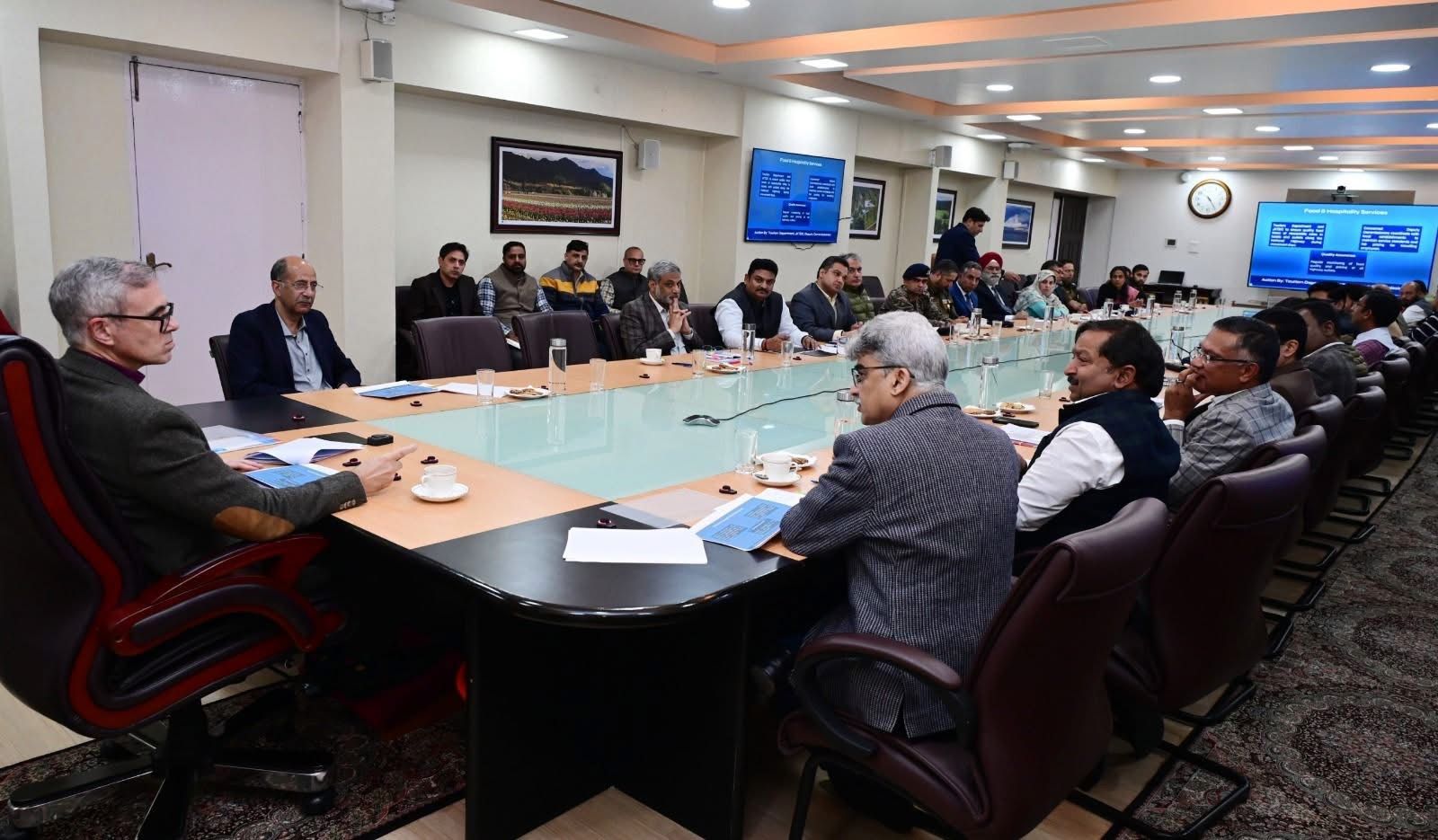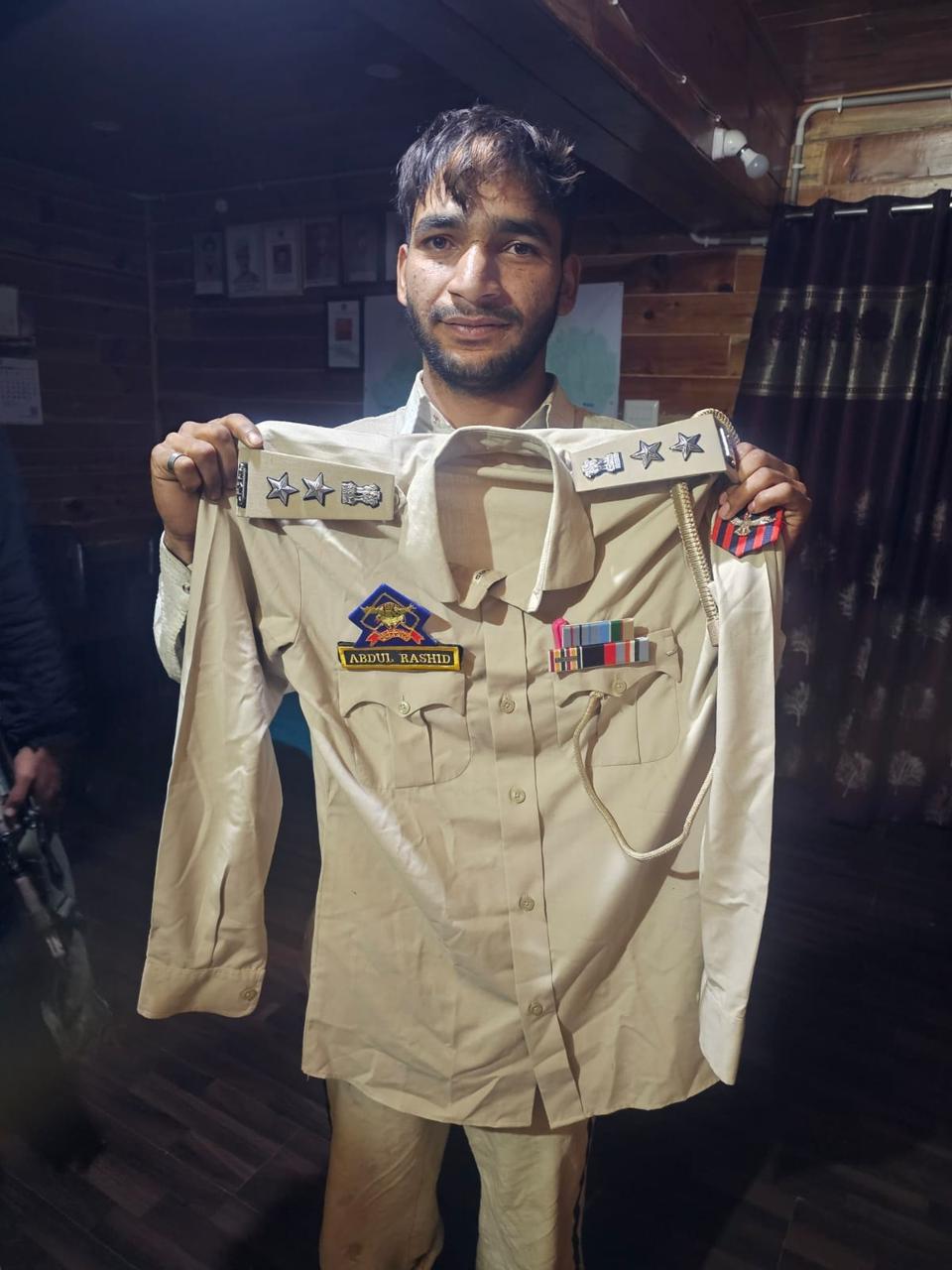
By M S Nazki
Golden bridge, silver bridge or diamond bridge; it doesn’t matter! As long as the bridge takes you across the other side, it is a good bridge!………..(Tiger Division Indian Army)!
-Art is what gets us beyond what is real. It makes reality more real. It also shortens the distance we gotta travel to see how connected we are………(GOC 26 Div knows this by heart)!
- Rainbows are a gift. They remind us that there are things in this world we can’t control, but simply are. Beautiful, deathly real, and sometimes alive!
-A rainbow is a multicoloured arc that forms in the sky when sunlight or moonlight is refracted (bent) and reflected by water droplets in the air. As light passes through these droplets, it splits into its constituent colors – violet, indigo, blue, green, yellow, orange, and red – creating a visible spectrum that appears in an arc opposite the light source. Rainbows can be seen in rain, fog, or spray from waterfalls and are caused by the specific bending and internal reflection of light rays within water droplets!
-They are something we receive simply by looking. Rarely is it shown to us in the midst of a violent storm, or during unbearable pain or suffering, but after the storm has passed, after the initial shock of pain and grief, a rainbow, a gift, is given to us, usually from a distance, far enough away to see clearly yet close enough to smell the fresh aroma of hope!
-Jammu watched with hopeful eyes, Prayers like incense touched the skies. Each rivet placed, each beam aligned, Was stitched with love of humankind!
-Upon the Tawi’s restless tide, A Bailey bridge stands, steadfast, wide. Born of sweat, of steel, of might, The Army raised it through the night. Where once the waters roared apart, Now flows a bond of soul and heart. The people’s dream, the soldier’s toil, Together blessed the sacred soil!
-When was First Bailey’s Bridge made?
-The first Bailey bridges were made in late 1941, with the concept approved by the British in late 1940, and went into military service by December 1941. Donald Bailey, an English civil engineer, invented the design, which was first used by the British Army in the North African campaign in 1942 during World War II. Military Deployment: They were first used by the British Army in North Africa in 1942 and extensively during World War II.
-When was it operationally first:
- The first operational Bailey bridge during World War II was constructed by the British Army over the Medjerda River near Medjez el Bab in Tunisia on the night of November 26, 1942. This was part of the North African Campaign. While this was the first operational use of the bridge, earlier prototypes were constructed for testing in England: A prototype was tested in 1941 by spanning a small waterway called Mother Siller’s Channel in Christchurch, Dorset, where it remains as a functioning bridge today.
-When did the Indian Army use Bailey’s Bridge for the first time?
-The Indian Army has used Bailey Bridges since inheriting them from the British after World War II, most notably during the 1971 war with Pakistan. The bridges have also been employed in subsequent disaster relief operations, such as the aftermath of the 2021 Uttarakhand flash floods and more recently in the 2024 Wayanad landslides, demonstrating their continued importance for military and relief purposes in India.
-1971 Indo-Pak War: The Indian Army deployed Bailey Bridges during the war to help liberate Bangladesh.
-Disaster Relief: After inheriting them from the British, the Indian Army continued to use the bridges for disaster relief, including in Uttarakhand after the 2021 flash floods and in Wayanad during the 2024 landslides.
- The Indian Army has used Bailey Bridges since inheriting them from the British after World War II, most notably during the 1971 war with Pakistan. The bridges have also been employed in subsequent disaster relief operations, such as the aftermath of the 2021 Uttarakhand flash floods and more recently in the 2024 Wayanad landslides, demonstrating their continued importance for military and relief purposes in India.
-And when the task was done in grace, a rainbow curved across its face, God’s own smile, serene and bright, crowning courage with His light!
- Legacy of the Bailey Bridge:
-British Legacy: India inherited a significant inventory of Bailey Bridges from the British after World War II.
-Modular Design: The bridges’ modular, prefabricated design allows for rapid assembly, making them invaluable for quick deployment in both military and disaster relief scenarios.
-Bailey Bridges stand out due to their innovative modular design, allowing for rapid assembly and disassembly without heavy equipment, making them ideal for temporary, emergency, or military uses. They are also versatile for different applications, offer a high load-carrying capacity suitable for heavy vehicles, and are built from durable, interchangeable steel components.
-Modularity and Interchangeability: The core strength of a Bailey bridge is its prefabricated, modular design. It consists of standardized steel panels, trusses, and decking that can be easily connected using pins and bolts, allowing for quick construction. Parts made by different manufacturers are also interchangeable, a significant advantage for military and civil applications.
-Rapid Assembly: The modular nature allows for very fast assembly, often in a matter of hours or days, even in challenging terrains or disaster zones. This quick deployment capability is crucial for emergency situations and military operations.
-High Load Capacity: Despite its quick assembly, a Bailey bridge is engineered to withstand significant weight, including heavy military vehicles and tanks. Its strength can also be adjusted by adding more panels or doubling side panels to handle different load requirements.
-Portability: The individual components are designed to be relatively lightweight, enabling small teams to transport and handle them, which reduces the need for heavy machinery and complex logistics.
Versatility: Bailey bridges are used in a wide range of situations, from military assault bridges and disaster relief to temporary connections for civil engineering projects and even for permanent infrastructure when needed.
Durability and Adaptability: Made from high-strength steel, Bailey bridges are robust and durable enough to withstand harsh environments. Their modular design also allows them to be adapted for different lengths and configurations as required by the situation.
Rainbows are a gift, like some people in this world, that bring light and beautiful colors into our lives. They remind us that there is hope for mankind, that we are not alone and that you matter for you do. These people are rainbows and from a distance you can see them shine!
The Indian Army’s Tiger Division built a temporary 110-foot Bailey bridge over the Tawi River in Jammu city in under 12 hours in late August 2025, following the collapse of the Tawi Bridge No. 4 due to heavy rainfall and flooding. The construction of this modular steel bridge, which can be assembled by hand, restored a vital transportation link for the community and enabled the free flow of traffic while permanent repairs to the original bridge are underway.
-The response was stupendous and the restoration preposterous!
-Speed: -Army engineers from the Tiger Division constructed the 110-foot Bailey bridge in less than 12 hours.
-Overcoming challenges: The army faced tough conditions, including washed-out approaches and limited workspace.
-Significance: The bridge allows for a quick return to one-way traffic, easing hardships for commuters and restoring vital connectivity in the region.
-Ongoing efforts: The Army also rescued stranded individuals and restored communication links, with additional resources on standby to address further challenges.
-So Tawi sings, in gentle stream, Of faith fulfilled, of shared dream. The bridge now tells a timeless story, Of toil, of love, of God’s own glory.
-The Indian Army’s Tiger Division likely first used Bailey bridges in wartime during the Indo-Pakistani War of 1971. The Indian armed forces inherited the design from the British after independence and have used them extensively in various conflicts. Why the 1971 war is the likely answer
-British legacy: India inherited the design of the modular, prefabricated Bailey bridge from the British forces after 1947. The first Bailey bridges were deployed by the British Army during World War II, so the technology was well-established by the time of the 1971 conflict.
-Use in the 1971 war: The Indian armed forces, including its engineering units, are documented to have used these bridges during the Indo-Pakistani War of 1971 to aid in the liberation of Bangladesh.
-Long-standing use: Indian Army units, including the Tiger Division, continue to use Bailey bridges for both military and disaster relief operations in challenging terrains like the Himalayas.
Clarification on Tiger Division:”
-It is important to note that the term Tiger Division has been associated with more than one Indian Army division over time.
-26th Infantry Division: Historically known as the “Tiger Head Division” during World War II, it was part of the British Indian Army and fought in the Burma campaign. This division later became part of the Indian Army and is based in Jammu as the Tiger Division.
-31st Armoured Division: This is also referred to as the White Tiger Division.
Now it is time to blow the last trumpet for the day and we will sum it up like this: These people are rainbows and from a distance you can see them shine, see the clarity that they bring, the joy that they share. Rainbows are a gift. Their colors never fade, but are always with us if we simply look outside of ourselves………..( a small extract from MD)!
Needless to mention GOC 26 Division deserves all the kudos for this unbelievable and unprecedented task at his hand!








